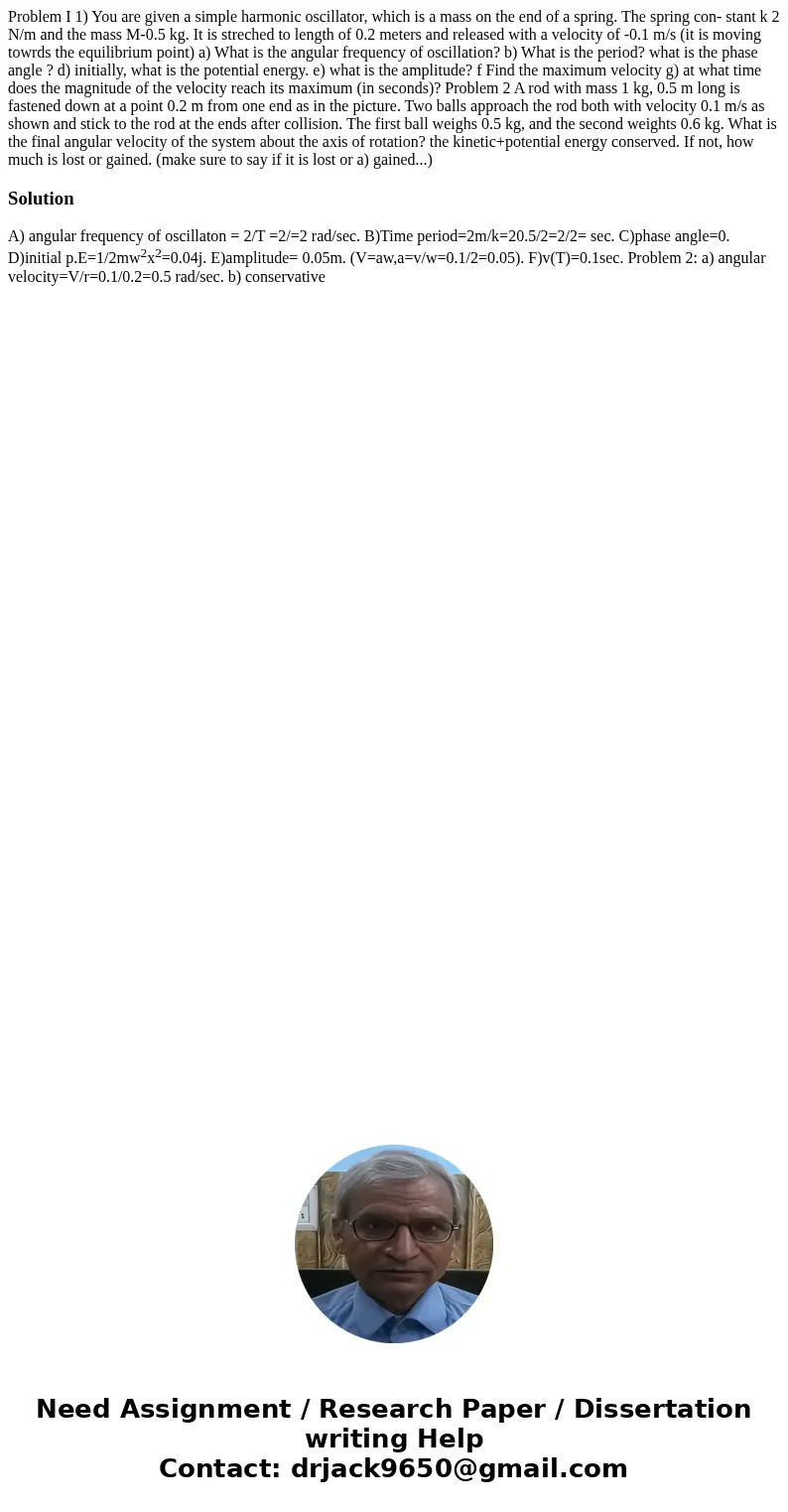Problem I 1 You are given a simple harmonic oscillator which
Problem I 1) You are given a simple harmonic oscillator, which is a mass on the end of a spring. The spring con- stant k 2 N/m and the mass M-0.5 kg. It is streched to length of 0.2 meters and released with a velocity of -0.1 m/s (it is moving towrds the equilibrium point) a) What is the angular frequency of oscillation? b) What is the period? what is the phase angle ? d) initially, what is the potential energy. e) what is the amplitude? f Find the maximum velocity g) at what time does the magnitude of the velocity reach its maximum (in seconds)? Problem 2 A rod with mass 1 kg, 0.5 m long is fastened down at a point 0.2 m from one end as in the picture. Two balls approach the rod both with velocity 0.1 m/s as shown and stick to the rod at the ends after collision. The first ball weighs 0.5 kg, and the second weights 0.6 kg. What is the final angular velocity of the system about the axis of rotation? the kinetic+potential energy conserved. If not, how much is lost or gained. (make sure to say if it is lost or a) gained...) 
Solution
A) angular frequency of oscillaton = 2/T =2/=2 rad/sec. B)Time period=2m/k=20.5/2=2/2= sec. C)phase angle=0. D)initial p.E=1/2mw2x2=0.04j. E)amplitude= 0.05m. (V=aw,a=v/w=0.1/2=0.05). F)v(T)=0.1sec. Problem 2: a) angular velocity=V/r=0.1/0.2=0.5 rad/sec. b) conservative

 Homework Sourse
Homework Sourse